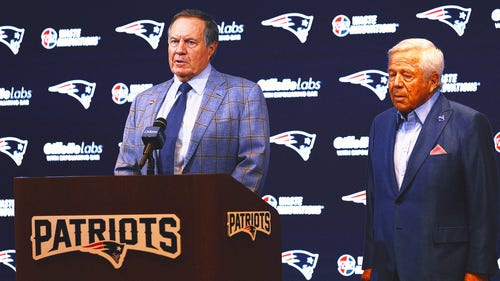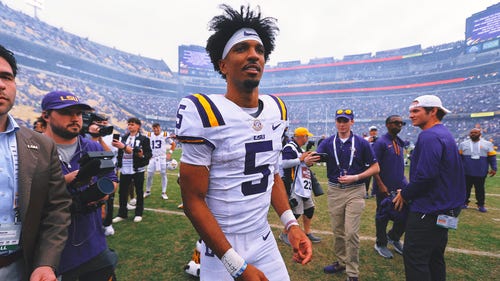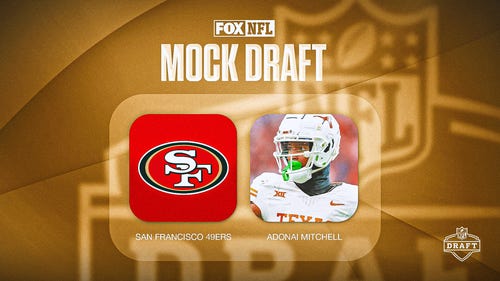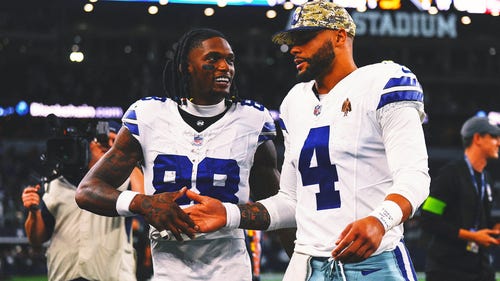
Key call incorrect in Ravens-Bengals
There were plenty of big calls in Week 2, but none bigger than the roughing the passer penalty in the Baltimore-Cincinnati game (see video above). Officials have a tough job and as I have said before, it's virtually impossible to work a perfect game. There are going to be incorrect calls and this week was no exception. My current job is not to criticize officials, but to use the calls that I deem to be correct or incorrect as a vehicle to teach readers and viewers the rules of the game.
Here are the five plays this week that are worthy of discussion.
THE GAME: Baltimore at Cincinnati
THE SITUATION: Baltimore leading 10-9 with 5:34 left in the fourth quarter. Cincinnati has the ball, first-and-10 at the Baltimore 41.
THE PLAY: Bengals quarterback Carson Palmer throws an incomplete pass, but Ravens linebacker Terrell Suggs is called for roughing the passer, putting the Bengals at first-and-10 at the Baltimore 26.
THE RESULT: The call on Suggs helps lead the Bengals to the go-ahead 38-yard field goal by Mike Nugent.
MY TAKE: While referees are instructed to err on the side of safety when it comes to protecting the quarterback, I feel the call was incorrect. Suggs made a form tackle on Palmer. And while he did land on top of him, he did not appear to unnecessarily or violently throw the quarterback down and land on top of him with most or all of his weight, which is what the rule states. I can see why the referee made the call that he did, but to me, it was a normal tackle and not a foul.
THE GAME: Pittsburgh at Tennessee
THE SITUATION: Pittsburgh leading 10-3 in the second quarter. Tennessee has the ball, first-and-10 at the Titans 23 with 1:36 left until halftime.
THE PLAY: The Titans' Chris Johnson takes the handoff for 1 yard, but fumbles. It's recovered by Steelers linebacker James Harrison. The replay assistant challenges the fumble ruling.
THE RESULT: The ruling on the field is upheld, which leads to a Steelers field goal, giving Pittsburgh a 13-3 lead.
MY TAKE: The interesting part of this review is that all of the discussion on television focused on the knee not being down when the ball came loose. However, what they should have been talking about was whether the left forearm was on the ground before the ball got knocked out of Johnson’s arm. A runner is considered down by contact if anything other than his hand, foot or the ball touches the ground. Although it was a very close play, I think the left forearm was down and the Titans should have retained possession. This decision led to a field goal by the Steelers, but had nothing to do with the outcome of the game, considering the Titans turned the ball over seven times.
THE GAME: Philadelphia at Detroit
THE SITUATION: Philadelphia trailing 17-14 in the second quarter with 13 seconds left until halftime. The Eagles have the ball, second-and-9 at the Detroit 9.
THE PLAY: Eagles quarterback Michael Vick hits Jeremy Maclin for a touchdown.
THE RESULT: The touchdown gives the Eagles a 21-17 lead. But ...
MY TAKE: I think Maclin pushed off and should have been called for offensive pass interference, which would have negated the touchdown. The rule states that a receiver may not initiate contact with an opponent by shoving or pushing off, thus creating a separation in an attempt to catch a pass. In this case, it appeared to me that Maclin turned into the defender, pushed off and got the separation that he needed to make the catch. Over the years, officials have called more defensive pass interference than offensive pass interference fouls. Recently, the officials have been instructed to focus just as much on the receiver as the defender. While the NFL has gotten better making OPI calls, in my opinion, this is one that should have been called.
THE GAME: Chicago at Dallas
THE SITUATION: Chicago has the ball in the first quarter on third-and-11 from the Dallas 24-yard line.
THE PLAY: The Bears' Jay Cutler is sacked at the Dallas 32 by DeMarcus Ware and Keith Brooking. Two penalties are called — offensive holding on Chicago's Kevin Shaffer, and Brooking is called for unnecessary roughness.
THE RESULT: Offsetting penalties.
MY TAKE: These two penalties offset, even though the holding call is a 10-yard penalty and the unnecessary roughness is a 15-yarder. Fouls by both teams almost always offset each other, even if one is a live-ball foul and the other is a dead-ball foul. One set of double fouls that don't offset is if one team commits a "simple'' 5-yard penalty and the other team commits a major 15-yard penalty. In that case, the simple 5-yard penalty is disregarded and the 15-yard penalty is assessed. That's exactly what happened in the Carolina-Tampa Bay game when the Bucs' Mike Williams was called for a false start and then the Panthers' Greg Hardy was called for a late hit on the quarterback after the false start. The false start was disregarded by rule and the personal foul was enforced. This "5-15'' rule does not apply if there is change of possession on the play. Both of these double-foul situations were correctly enforced.
THE GAME: Chicago at Dallas
THE SITUATION: Dallas leading 14-10 with 3:38 left in the second quarter. Chicago has the ball, first-and-9 at the Dallas 9.
THE PLAY: Chicago quarterback Jay Cutler hits Devin Hester on a 9-yard touchdown pass.
THE RESULT: Dallas challenges the pass completion ruling, and the play is upheld.
MY TAKE: Who would have ever thought that one of the benefits of certain types of artificial turf is that rubber pellets fly in the air when a player drags his toe trying to complete a catch? The officials actually look for this when making their ruling. Hester clearly dragged his toe and the call was made easier by the visible rubber seen flying through the air on replay.















































































































































